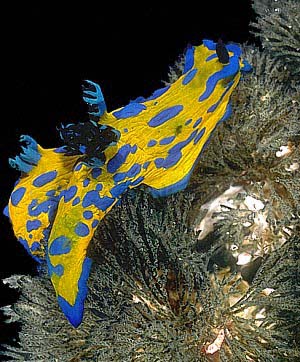
Tambja verconis
(Basedow & Hedley, 1905)
Order: NUDIBRANCHIA
Suborder: DORIDINA
Family: Polyceridae
Subfamily: Nembrothinae
DISTRIBUTION
Temperate southeastern Australia and northeastern New Zealand.
PHOTO
Southern part of Yorke Peninsula, South Australia, February 1985, on arborescent bryozoan Bugula dentata. Largest animal approx 70mm. PHOTO: Bill Rudman.
This brilliantly coloured nudibranch is normally found on its food, the bushy plant-like bryozoan Bugula dentata. It is a sublittoral species found between 2-40m.
See the Armstrong's message reporting it being eaten by Roboastra luteolineata.
-
Basedow, H. & Hedley, C. (1905). South Australian nudibranchs, and an enumeration of the known Australian species. Trans. Proc. Royal Soc. South Aust., 29: 134-160
-
Burn, R.F. (1962): Descriptions of Victorian nudibranchiate mollusca, with a comprehensive review of the Eolidacea. Memoirs of the National Museum of Victoria, 25: 95-128.
Rudman, W.B., 1998 (December 13) Tambja verconis (Basedow & Hedley, 1905). [In] Sea Slug Forum. Australian Museum, Sydney. Available from http://www.seaslugforum.net/find/tambverc
Related messages
Tambja verconis in Broulee, New South Wales
November 29, 2007
From: Matthew Sullivan
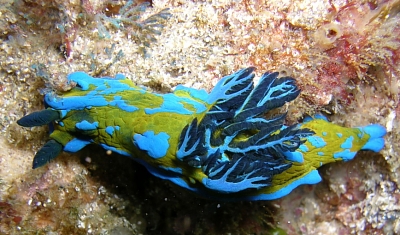
I found this Nembrotha??? species at Broulee in southern New South Wales on 01 March 2007 in about 4-5 metres of water. It was less than 25 mm in length.
Locality: Broulee, 5 m, New South Wales, Australia, Pacific Ocean, 01 March 2007. Length: 25 mm. Photographer: Matthew Sullivan.
Can you help with identifying it? No one that I've talked to has seen anything similar before in this area.
Thanks,
Matthew
matthew.sullivan@verizonbusiness.com
Sullivan, M., 2007 (Nov 29) Tambja verconis in Broulee, New South Wales. [Message in] Sea Slug Forum. Australian Museum, Sydney. Available from http://www.seaslugforum.net/find/21215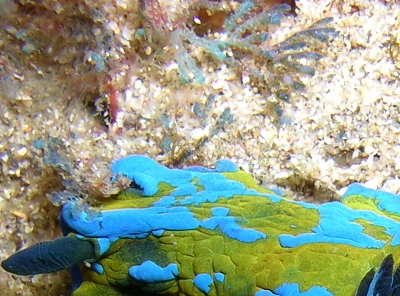
Dear Matthew,
This animal is related to Nembrotha, but while species of that genus feed on ascidians, your animal is Tambja verconis which feeds on bryozoans. In the close up alongside you will see some blue plant-like growths at the top left. They are small branches of the bryozoan Bugula dentata which T. verconis eats. As you will see from the Fact Sheet and attached messages, this species is found around southern Australia and northern New Zealand. On the east coast of Australia it has been found as far north as Port Stephens, but as it is dependent on Bugula for its food, its is never a permanent resident anywhere, its presence being controlled by the irregular appearance and disappearance of its food.
Best wishes,
Bill Rudman
Tambja verconis - Life Stages?
August 10, 2007
From: Steve Ivacko
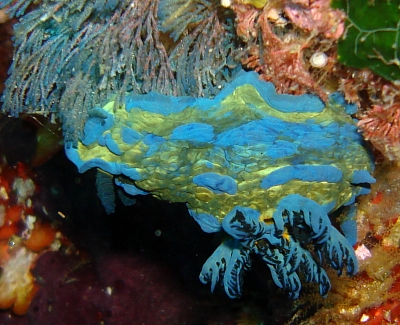
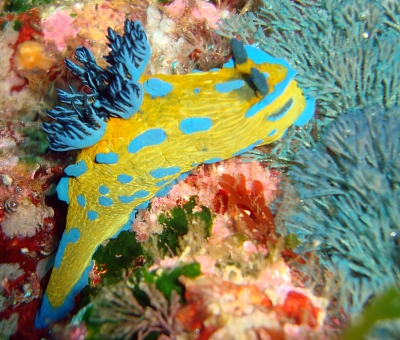
Hi there,
On my final dive at the Poor Knights during my trip to New Zealand, I snapped these shots - I believe all are Tambja verconis, but they appear to be either in different life stages, or in different degrees of health because of the differences of colours of the blue trim areas, and the yellow-turning-blue main areas of their bodies.
Locality: Brady's Corner, Poor Knight Islands, 5 - 15 metres, New Zealand, Pacific Ocean, 24 March 2007. Photographer: Steve Ivacko.
I would be extremely grateful if I could get some clarification on this.
Thanks
Steve
stevenivacko@hotmail.com
Ivacko, S, 2007 (Aug 10) Tambja verconis - Life Stages?. [Message in] Sea Slug Forum. Australian Museum, Sydney. Available from http://www.seaslugforum.net/find/20424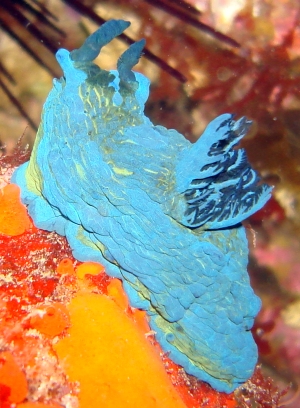
Dear Steve,
You don't give any clues as to the size of these three animals but from the background they all look quite large, so I don't think 'life-stages' is an explanation to the colour differences. In two of your photos the animals are eating - or showing interest in a plant-like colony of the bryozoan Bugula dentata on which they feed. Species of Tambja all feed on bryozoans, and as I discuss in a recent message [#19296], they store chemicals from the bryozoan in their skin which they use to protect them from attack, especially from the related nudibranchs of the genus Roboastra.
Species of Tambja exude these anti-feedant chemicals in a thick mucus from small pores in their skin. I think in the upper and lower photos, the bluish colouration on the body is the mucus secretion from these glands. Apparently some of the blue pigment from the bryozoan is also transferred to the skin glands.
Best wishes,
Bill Rudman
Feeding Tambja verconis in New Zealand
May 17, 2007
From: Samuel Kemp
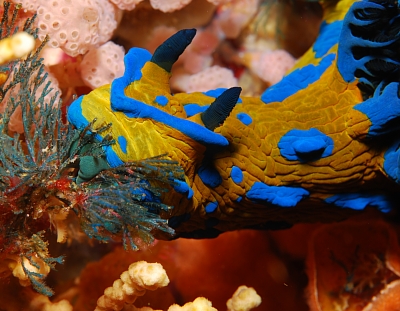
Dear Bill,
Thought you might like these pictures of various Tambja species feeding. The pictures were all taken whilst diving Middle Arch, Poor Knight's Islands, last weekend.
Locality: Middle Arch, Poor Knight's Islands, 10 m, New Zealand, Pacific, 04 February 2007. Photographer: Samuel Kemp.
This one shows Tambja verconis
Samuel Kemp
samuel_kemp@hotmail.com
Kemp, S.V., 2007 (May 17) Feeding Tambja verconis in New Zealand. [Message in] Sea Slug Forum. Australian Museum, Sydney. Available from http://www.seaslugforum.net/find/19419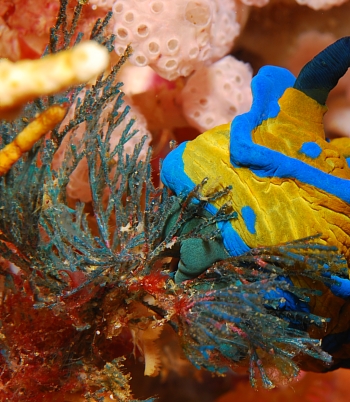
Dear Sam,
Thanks for this nice series of photos. I have split your message into three, all of which show a different species of Tambja feeding on the blue plant-like bryozoan Bugula dentata. The other two show Tambja tenuilineata [message #19907] and Tambja morosa [message #19908]
Best wishes,
Bill Rudman
Tambja verconis and bryozoan
April 6, 2007
From: Jacqui Younger
Hi there,
I am at the Maritime College of Australian and am to do an assignment on the Tambja verconis. I am having trouble finding in depth information (the assignment is 2500 words!!) such as environmental impacts, scientific drawings, and the current populations if known, etc etc and many etc. If anyone could point me in the right direction, such as any good books, I would so appreciate it!!
Regards
Jacqui
ksampson@nex.net.au
Younger, J., 2007 (Apr 6) Tambja verconis and bryozoan. [Message in] Sea Slug Forum. Australian Museum, Sydney. Available from http://www.seaslugforum.net/find/19687Dear Jac,
I am afraid the biggest lesson you will learn is how little we know about most marine animals. The information you will find on the Forum - in the Fact Sheet and associated messages - is the largest accumulation of information on this species available. Have a look at the two references in the Fact Sheet as well.
Perhaps you can pad out your assignment by talking about Sir Joseph Verco, after who the species was named. He was also doubly honoured in the species Verconia verconis. There is quite a good introduction to him in the online edition of Australian Dictionary of Biography at: http://www.adb.online.anu.edu.au/biogs/A120355b.htm
These days, unfortunately, we don't see many politicians and prominent members of the community, taking an interest in, or who feel it is their duty to fight strongly for marine environmental research.
Best wishes,
Bill Rudman
Tambja verconis laying eggs
April 6, 2007
From: Melissa Barnes
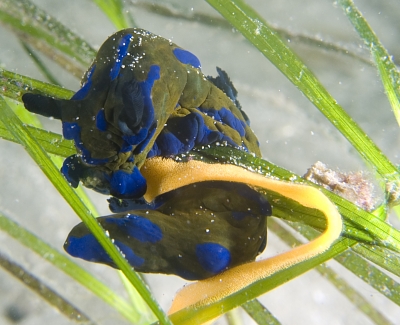
Hi,
I thought you might like this photo of a Tambja verconis laying eggs.
It was found at Blairgowrie Pier Victoria, in about 5m of water and water temp was 18C.
Locality: Blairgowrie Pier, 5m, Victoria, Australia, Port Phillip Bay, 1 April 2007. Photographer: Melissa Barnes.
Kind Regards,
Melissa Barnes
melissa.barnes@aanet.com.au
Barnes, M.S, 2007 (Apr 6) Tambja verconis laying eggs. [Message in] Sea Slug Forum. Australian Museum, Sydney. Available from http://www.seaslugforum.net/find/19805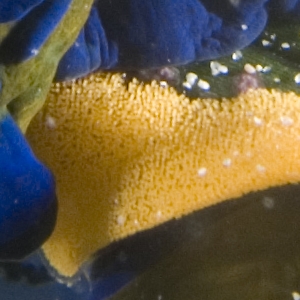
Dear Melissa,
I always welcome photos of these animals laying eggs. A sea grass bed may seem a strange place for a bryozoan feeder, like Tambja, to be laying its eggs, but sea grass beds are utilised as nurseries and places of refuge by many animals, and it only takes a small rocky outgrowth or a dead shell in the grass beds, to provide an attachment point for a bryozoan colony.
Best wishes,
Bill Rudman
Tambja verconis from Melbourne, Australia
April 11, 2005
From: Martina Fuchsberger
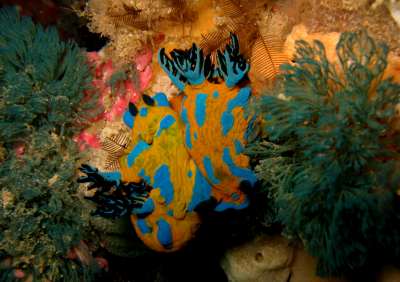
Dear Bill,
I found the 3 Tambja verconis sitting in between all their food. Two of them are sitting on a 3rd one which is hard to see. Unfortunately I couldn't get a better shot to show the one underneath. I am curious as to what they are doing. Do you have any ideas?
Locality: Eliza Ramsden, Port Phillip Bay, Melbourne, Victoria, Australia.
Depth: 18 m. Length: approx 45 mm. 25 March 2005. Wreck, sandy bottom. Photographer: Martina Fuchsberger
Best wishes,
Martina Fuchsberger
m.fuchsberger@gmx.at
Fuchsberger, M., 2005 (Apr 11) Tambja verconis from Melbourne, Australia. [Message in] Sea Slug Forum. Australian Museum, Sydney. Available from http://www.seaslugforum.net/find/13470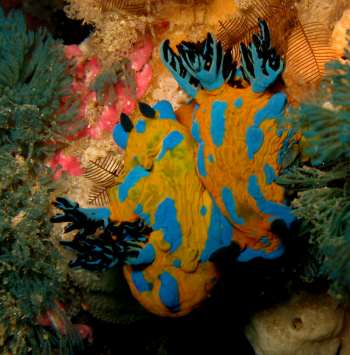
Dear Martina,
I can't see the third animal you mention, but the two I can see are almost certainly mating. Nudibranchs have their reproductive openings on the right side of the body, so when you see two animals with their right sides pressed together its a pretty sure sign that they are mating.
Best wishes,
Bill Rudman
Tambja verconis egg-laying
January 26, 2004
From: Leanne & David Atkinson
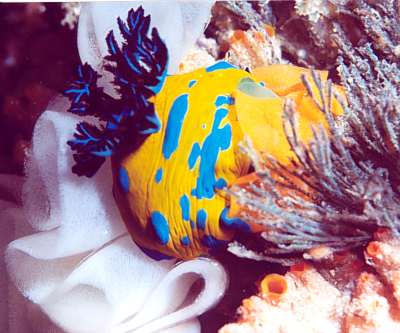
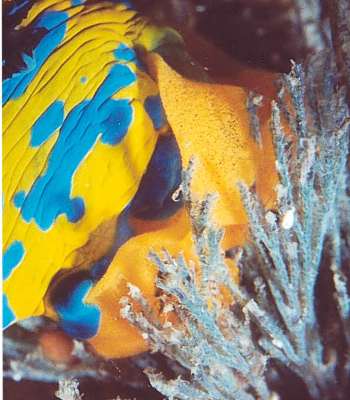
Dear Bill,
We found Tambja verconis egg-laying. It was laying right up close to another larger white egg ring. At first we weren't sure which egg ring belonged to it, but closer inspection showed it shaping the orange ring with its tail.
Its bryozoan food, Bugula dentata is almost gone. All of the Tambja sp. 1 that were on the Bugula dentata have also gone. The yellow of the Tambja verconis is starting to look a duller colour and we wondered if this is a sign of starvation.
Location: Halifax Sponge Gardens, Marine Reserve, Port Stephens, NSW, Australia
Date: 03 January 2004. Time: 6:00pm. Depth: 19m. Tide: High 1.16m. Water Temperature: 16 degrees celcius
Hope this is of interest.
Yours sincerely,
Leanne & David Atkinson
atk@hunterlink.net.au
Atkinson, L. & D., 2004 (Jan 26) Tambja verconis egg-laying. [Message in] Sea Slug Forum. Australian Museum, Sydney. Available from http://www.seaslugforum.net/find/11951
Dear Leanne & David,
This is indeed interesting. I don't think I have seen the bright orange-yellow eggs of this species before. The obvious white egg ribbon alongside is an excellent example of the dangers of assuming that closeness of eggs to an adult slug means ownership. You were indeed fortunate to find this animal while it was laying its orange egg ribbon rather than just before, or we might have been misled into thinking it had a white egg ribbon.
I am not sure if colour fades as they get old and decrepit. I would perhaps have expected the blue colour, which may be from the Bugula, to fade if the slug was not able to feed on Bugula, but I am not sure what connection there would be between the yellow pigment and starvation
Best wishes
Bill Rudman
Tambja verconis mating
December 24, 2003
From: Steve Winkworth
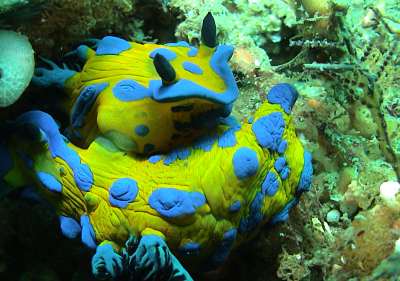
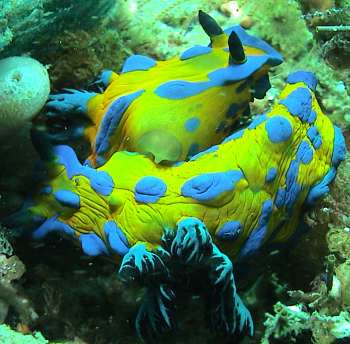
Bill
I took these photos of a pair of Tambja verconis mating at Halifax Park in Port Stephens on 13/12/03 [New South Wales, Australia] at approximately 18m on a small ledge.
I hope they are of interest to you.
Regards
Steve Winkworth
swinkworth@thiess.com.au
Winkworth, S., 2003 (Dec 24) Tambja verconis mating. [Message in] Sea Slug Forum. Australian Museum, Sydney. Available from http://www.seaslugforum.net/find/11739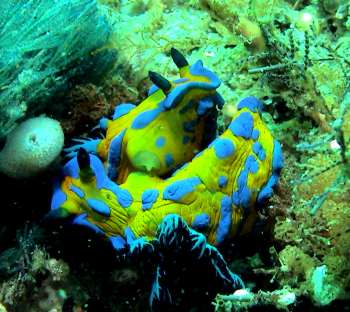
Thanks Steve,
Photos of animals 'doing things' such as mating, egg-laying, and feeding, are always of interest. Your photos again emphasise the dependence of many of the animals on their food. The bushy plant-like blue object at the top left of your photo is a colony of its bryozoan food, Bugula dentata. There is also a bit of Bugula at the top right of the photo, which looks as though it has already been eaten by Tambja.
Best wishes
Bill Rudman
Tambja verconis from Port Stephens
December 12, 2003
From: Leanne & David Atkinson
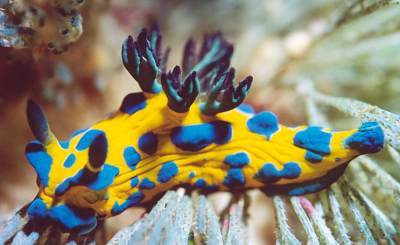
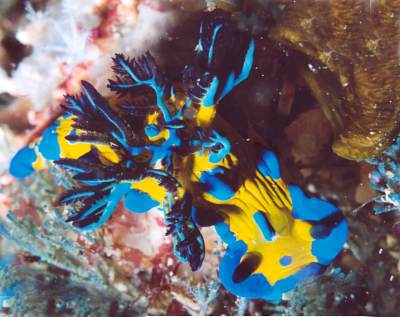
Dear Bill,
We have found what we think is Tambja verconis. It is the first time we have seen it in the area over the last 20 years. Over the past month we have found three of them. One was at Fly Point and two were at Halifax Sponge Gardens. We have seen one at Halifax consistently in the same area over 4 dives spread over a month.
Upper Photo:
Halifax Sponge Gardens, Marine Reserve,
Port Stephens, NSW, Australia
Date: 9.11.03
Depth: 18m Tide: high 9.08am
Water Temperature: 17 deg C
Size: 30mm
Lower Photo:
Location: Fly Point, Marine Reserve, Port Stephens, NSW, Australia
Date: 22 November 2003
Depth: 14m Tide: High 7.30am
Water Temperature: 16 deg C.
Size: 33mm
There were Tambja sp.1 in the same area. They were all on the Bugula dentata.
Regards,
Leanne & David Atkinson
atk@hunterlink.net.au
Atkinson, L. & D., 2003 (Dec 12) Tambja verconis from Port Stephens. [Message in] Sea Slug Forum. Australian Museum, Sydney. Available from http://www.seaslugforum.net/find/11647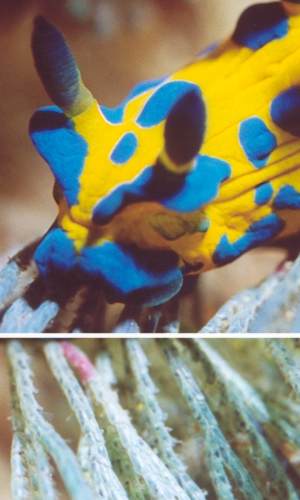
Dear Leanne & David,
This is Tambja verconis. It seems to be more regularly found further south, but at times it can be found as for north as Port Stephens. We have still a lot to learn about these animals. It would be interesting to know whether the bright blue pigment of this species is derived from their food. Your photos show how similar the colour of Bugula dentata can be to the blue of T. verconis.
Best wishes
Bill Rudman
Tambja verconis from Mokohinau Ids, N.Z.
April 28, 2003
From: Mark Burnett
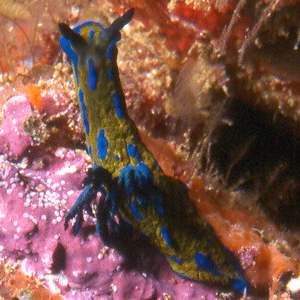
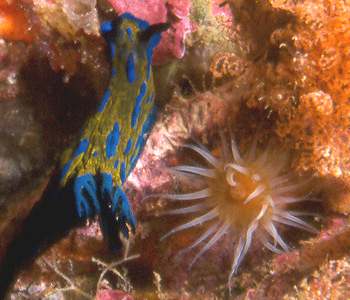
Hi Bill,
Have been off air for a while with scanner problems - maybe I bought the same brand as you? Diving at the Mokohinaus a couple of weeks ago I was disappointed at the lack of nudibranchs. I saw three in two dives in terrain that looked like nudibranch heaven.
One of the three was this juvenile Tambja verconis, the smallest I have ever seen at about 4cm. It was crawling up a wall at 17.5 metres but nowhere could I find any Bugula dentata. Does it come in colours other than green? I have no idea what this individual would have been feeding on or how it got there. There is an orange bryozoan (second photo) but it certainly wasn't feeding.
The pictures were taken at Burgess Island in the Mokohinau Islands [Hauraki Gulf Maritime Park NE of Auckland, New Zealand]. Depth 17.5 metres, water temperature 19 degrees C, 22nd March, 2003.Regards
Mark Burnett
mburnett@actrix.gen.nz
Thanks Mark,
There is always the possibility that this animal has eaten all the available Bugula and is slowly starving to death. We really don't know enough about their biology and behaviour to say whether a lone animal away from its food is just adventurous, or looking for a mate, or having eaten out its food colony, is looking for some more food. I don't know of another bryozoan that T. verconis eats. The orange bryozoan in the top left of your lower photo looks very like Orthoscuticella ventricosa (Bush, 1852), and orange species with characteristic rolled ends to it 'branches' and is found in temperate Australia. I have found marginellid snails on it but don't remember any nudibranchs being interested in it
Best wishes,
Bill Rudman
Tambja verconis from Victoria, Australia
February 20, 2002
From: Stuart Hutchison
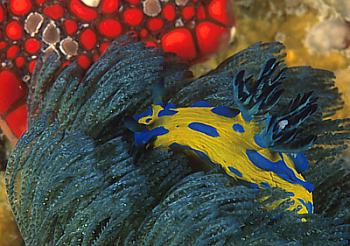
Bill,
Here's Tambja verconis from Portsea Pier, Victoria, Australia. Depth 4m, lengths 60mm. Obviously favours the particular weed they're perched upon.
Stuart
stuart@stuarthutchison.com.au
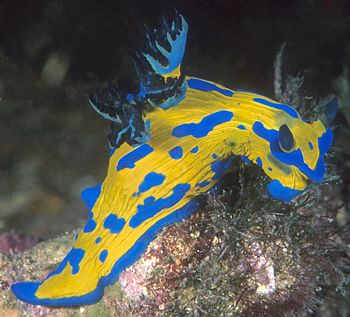
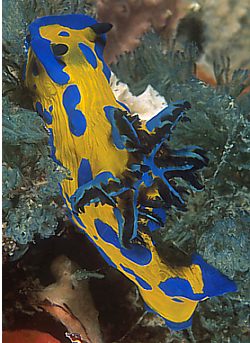
Thank Stuart,
The 'weed' it favours is its favourite food, an arborescent [tree-like] bryozoan colony, Bugula dentata.
Best wishes,
Bill Rudman
Tambja verconis from New South Wales
March 26, 2001
From: Erik Schloegl
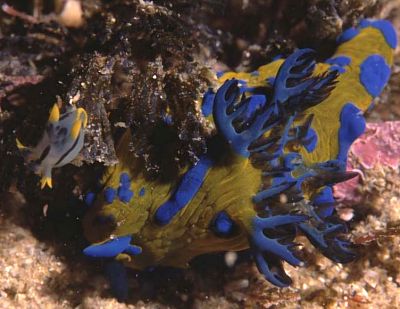
This is part of a message sent separately about Polycera capensis. I have copied the part about Tambja verconis so it can be cross-referenced here .. Bill
Dear Bill,
..... Here's another photo of what I think is Polycera capensis. The larger animal obviously is Tambja verconis. The picture was taken on 25 September 1999 at Tathra Wharf in southern New South Wales. The depth was 12m on a sand/rubble bottom.
Best regards,
Erik
Erik.Schlogl@uts.edu.au
Schloegl, E., 2001 (Mar 26) Tambja verconis from New South Wales. [Message in] Sea Slug Forum. Australian Museum, Sydney. Available from http://www.seaslugforum.net/find/4045Thanks Erik,
The blackish growth the slugs are on is the arborescent bryozoan Bugula dentata, a common food of T. verconis.
Bill Rudman
Tambja verconis from Kurnell, Sydney
May 31, 2000
From: A. Lumnitzer & D. Piotrowska
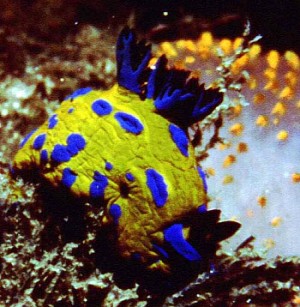
Dear Bill,
Here is a Tambja verconis we found at 12 meters of depth off Kurnell, Botany Bay, Sydney, New South Wales, Australia.
Best wishes
Akos & Donata
akos72@hotmail.com
Lumnitzer, A. & Piotrowska, D., 2000 (May 31) Tambja verconis from Kurnell, Sydney. [Message in] Sea Slug Forum. Australian Museum, Sydney. Available from http://www.seaslugforum.net/find/2437Dear Akos & Donata,
Thanks,
Bill Rudman.
More photos of N.Z. Tambja verconis
February 19, 1999
From: Ross Armstrong
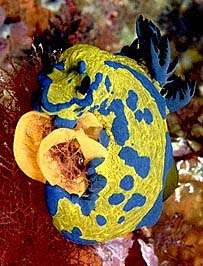
Hi Bill
Attached are some photos of Tambja verconis from the Poor Knights Islands [northeastern New Zealand]. One to right laying egg ribbon.
regards
Ross
Ross@northpower.co.nz
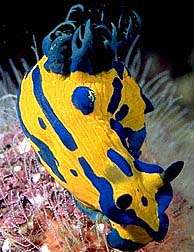
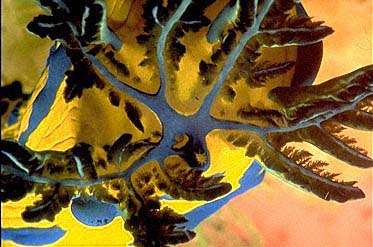
Thanks Ross,
Always happy to get beautiful photos.
Bill Rudman.
Tambja verconis from New Zealand
December 13, 1998
From: Ross Armstrong
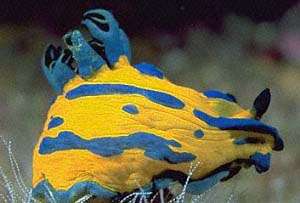
Bill,
Here is a photo of Tambja verconis from the Poor Knights Islands in northeastern New Zealand. Fairly common. Photo: Diane Armstrong.
Ross Armstrong.
ross@northpower.co.nz
Armstrong, R., 1998 (Dec 13) Tambja verconis from New Zealand. [Message in] Sea Slug Forum. Australian Museum, Sydney. Available from http://www.seaslugforum.net/find/384